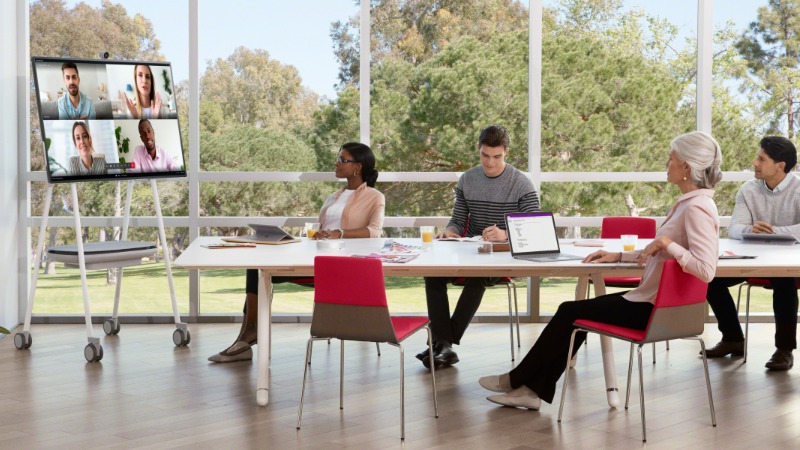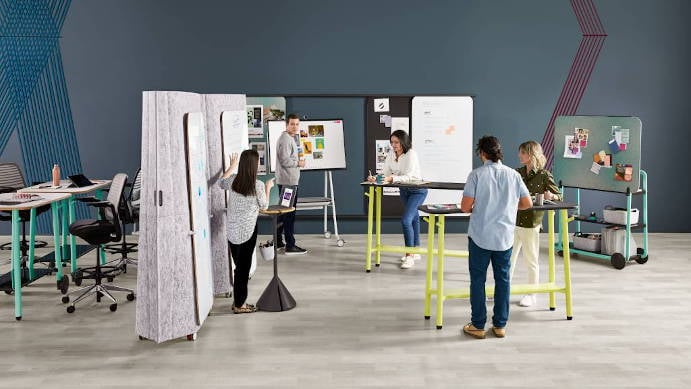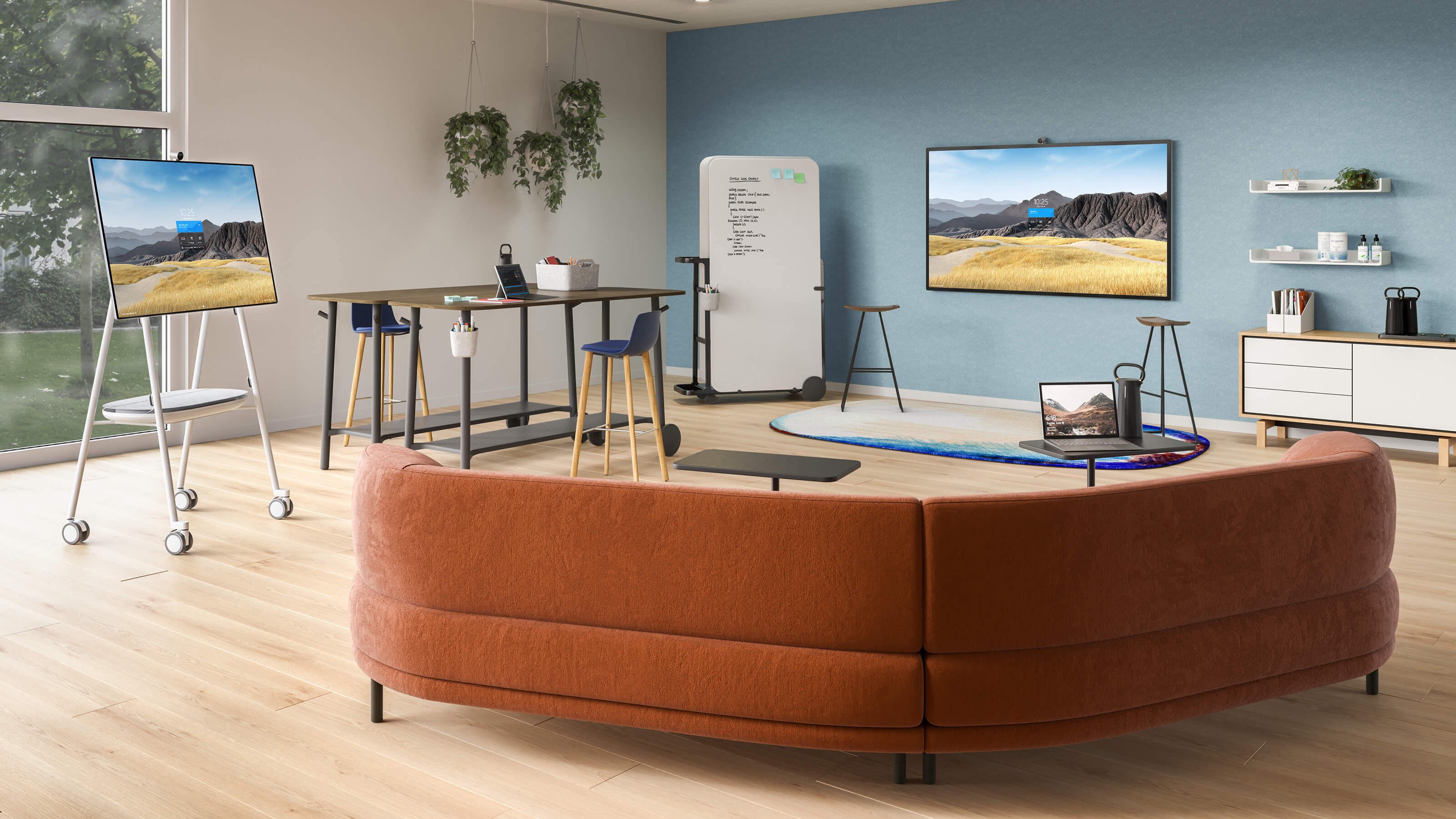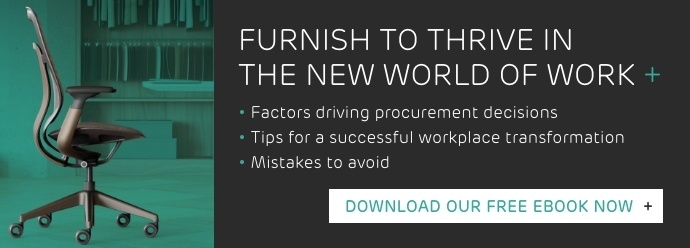There are many reasons you might be revisiting your workplace design. Perhaps you're embarking on a culture change or sustainability initiative, are looking to improve collaboration or employee retention, or are facing a merger or acquisition.
Whatever your reason for revisiting your office space, you'll need a workplace strategy.
What is the purpose of a workplace strategy?
A workspace strategy is a blueprint for using your workspace to support employee performance and achieve your business goals.
Workplace strategy places your people, culture and goals at the core of workplace design so that all decisions you make when fitting out or refurbishing your office are motivated by these factors.
The benefits of creating a workplace strategy include:
- Improved employee performance
- Improved collaboration, teamwork and innovation
- Improved employee engagement
- Ability to attract and retain talent
- Reduced costs
- Reduced environmental impact
Every workplace is different, so creating a workplace strategy tailored to your specific business is essential.
How to develop your workplace strategy
These five steps will help you develop an effective workplace strategy to drive every aspect of your project.
1. Align to business objectives
Before defining your workplace strategy, consider the bigger picture of what your company is trying to achieve. Whether you want to increase revenue, improve employee retention, or become carbon neutral, your workplace strategy should help your company achieve these objectives.
By framing your workplace strategy around your business's overall strategy, you can ensure they remain aligned. You will also have an easier time getting sign off on budget if you can prove that your proposed design will support the broader goals of the business.

2. Understand your existing workplace
Before you start looking too far into the future, take a step back and look at how your existing workplace is performing.
An audit is an excellent place to start as it will help you understand how your office is currently used. Metrics to explore could include:
- Utilisation: How many people use the office each day? What percentage of desks and meeting spaces are used and how often? How much of the space goes unused? Are some overused or backed-up?
- Operational costs: What's the cost of your workplace per square metre? Cost per employee?
- Compliance: Does the space comply with health and safety, privacy and building access regulations?
- Employee satisfaction: How satisfied are your employees with the current amenities? How many reports of maintenance or technical issues do you receive?
- Energy efficiency: How much energy does your office consume? And how much of this is from renewable sources?
But you'll also want to talk to your employees to understand how they feel about the workplace. What works and what doesn't? What tools and technologies do they rely on to get work done? What activities do they currently undertake? How can the new workspace enhance these tasks?
Perhaps your employees need to collaborate with teammates regularly but don't have a dedicated space to do so. Or maybe they need somewhere with a little more privacy to get focused work done. Perhaps they've started doing a lot of hybrid collaboration but are struggling with outdated technology. Also, consider the furniture and the office layout. How do they support your employees in their work?
Obtaining feedback from your employees will provide valuable insights for moving forward.
3. Create a plan
Once you have a lay of the land, you can set out where you will focus your efforts and form a picture of your desired outcomes.
Depending on your focus, whether it's cost savings, collaboration, sustainability, or all three, you can consider a range of actions. For example, these may include:
- Adding more meeting spaces with technology to support hybrid collaboration
- Introducing zones for specific activities such as brainstorming areas with whiteboards or quiet and private areas for focused concentration
- Introducing informal breakout spaces where colleagues can socialise
- Implementing hot-desking
- Incorporating flexible furniture so employees can adapt the space to suit their personal preferences and changing needs throughout the day
- Repurposing unused desks into collaboration tables to both reduce your carbon footprint and support employees' needs

4. Share it
To successfully deploy any new strategy, you need the support of everyone in the business, from the board to managers to employees.
Sharing what you propose with stakeholders and clarifying how the strategy will help achieve the business objectives will help you get their buy-in.
Keep your employees regularly updated and engaged with the process too. After all, they're the ones who will be most impacted. As the project evolves, you may want to recruit a group of managers and employees to share and test ideas with. The more people you have on board with your plan, the better chance it has of succeeding.
5. Refine it
Employee needs and workplace trends are constantly evolving, so it's important to take a long term view and an agile approach to your workplace strategy. It's a good idea to consistently work on it to ensure you continue to keep employees satisfied and meet your business goals.
Summary
Developing a workplace strategy gives you a blueprint for creating a working environment that meets the needs of your people and helps you achieve your business objectives.
At IE, we've helped hundreds of organisations create better, healthier and more sustainable workplaces. We can help you define your strategy so you can make informed decisions at every stage of your project. We listen carefully to understand your goals, challenges and priorities, what your people need and how they like to work.
Get in touch to find out more about how we can support you with your workplace transformation.












